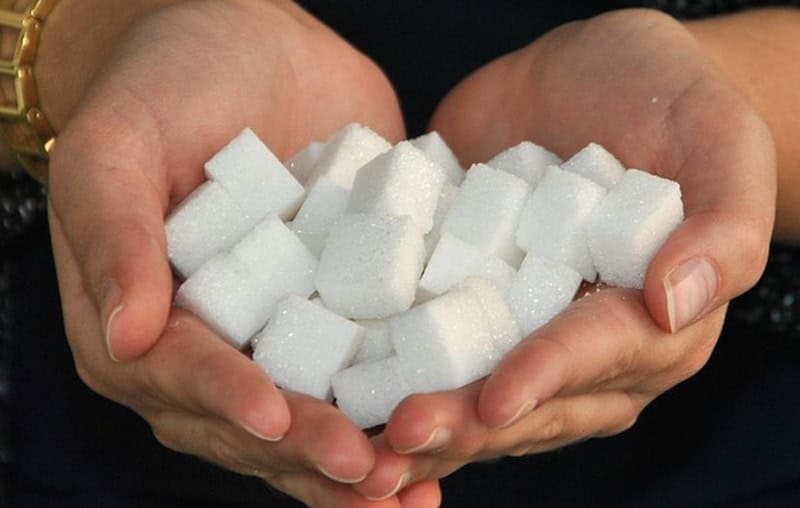Discovering the Differences being used and Advantages In Between Beet Sugar Vs Cane Sugar
In the cooking world, the selection in between beet sugar and cane sugar is not just concerning sweet taste however includes a nuanced consideration of taste, application, and influence. While both sugars come from different plants, each undertakes unique production procedures that subtly influence their attributes and suitability for numerous meals. As chefs and customers significantly focus on both the ecological and taste profiles of their components, comprehending these distinctions comes to be critical. This exploration uses insight into how each sugar kind can best improve culinary productions.
Beginnings and Production Processes of Beet and Cane Sugar

Walking cane sugar, on the other hand, originates from the sugarcane plant, a tropical yard native to Southeast Asia yet now grown in exotic zones worldwide. The production of cane sugar begins with the harvesting of cane stalks, which are crushed to launch the juice. This juice is then boiled to focus it, after which it is rotated in centrifuges to produce raw sugar crystals. These crystals are more fine-tuned to generate the white sugar typically readily available in stores.

Nutritional Content and Wellness Considerations

When comparing the dietary web content of beet sugar and cane sugar, it ends up being obvious that both types essentially give the very same calorie values, with about 16 calories per tsp and no substantial nutrient variety. Both sugars, when consumed in excess, can contribute to raised blood glucose levels, a threat variable for diabetes mellitus and other metabolic disorders. From a health viewpoint, moderating intake of any kind of kind of sugar, whether from beet or cane, is recommended to avoid these possible unfavorable effects on health.
Taste Profiles and Culinary Applications
Despite their comparable chemical structures, beet sugar and cane sugar differ discreetly in flavor, which can influence their usage in different culinary contexts. Cane sugar frequently lugs a tip of molasses, even in its polished type, lending a cozy, caramel-like touch that improves baked items, coffee, and chocolate-based dishes. This slight molasses taste is especially valued in the cooking market for adding deepness to sweets and breads. On the other hand, beet sugar is identified by its extremely improved, neutral taste, making it a functional sugar that does not alter the this link taste accounts of meals. This neutrality is especially useful in fragile dishes, such as light pastries, lotions, and some sauces, where the intrinsic flavors of various other active ingredients are meant to stand out. Subsequently, chefs and food makers could select one kind of sugar over the other based on the wanted flavor result of their culinary developments.
Ecological Influence and Sustainability
While both beet and cane sugars are obtained from plants, their ecological influences differ dramatically due to the distinct methods of farming and processing needed for each. Sugar beet growing frequently entails extensive automation, which can increase fossil fuel consumption and carbon exhausts.
Furthermore, the processing of sugarcane usually creates a significant quantity of waste, including bagasse, which, although useful as biofuel, often contributes to air contamination if burned inefficiently. Sugar beet handling utilizes even more of the raw materials, causing much less waste. Both markets deal with difficulties in decreasing their environmental footprints, but ongoing developments in farming methods and waste management are aiming to boost sustainability.
Economic Aspects Influencing the Sugar Sector
The economic dynamics Recommended Reading of the sugar market are significantly influenced by worldwide market needs and profession policies. Elements such as tariffs, aids, and global profession agreements play important duties in forming the affordable landscape. As an example, in regions where sugarcane or sugar beet production is subsidized, producers may have a monetary benefit that allows them to supply reduced rates on the global market. This can produce variations in earnings and market accessibility for manufacturers in nations without such aids.
In addition, fluctuations in worldwide need for sugar, influenced by dietary patterns and industrial usage in food items, straight impact costs and manufacturing levels. beet sugar vs cane sugar. Weather also play a pivotal role, as they can considerably impact plant returns and, subsequently, the supply chain. This irregularity presents a degree of financial uncertainty that can result in investment volatility in sugar production fields, influencing decisions from planting to market method
Verdict
In verdict, both beet and cane sugar have special top qualities that suit different cooking find out requirements. While cane sugar conveys an abundant flavor perfect for improving baked goods, beet sugar's neutrality is best for lighter dishes.